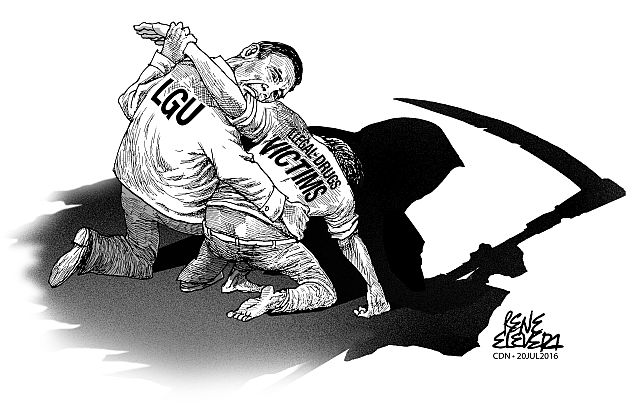
Others view it as a “shakedown” while many more see Oplan TokHang (Toktok Hangyo or Knock and Appeal) as an effective grassroots strategy by the Duterte administration to verify, profile and monitor suspected drug users and pushers.
As of latest count, the number of people who surrendered to the police as part of their Oplan TokHang run up to the hundreds, if not the thousands, in Metro Cebu, and it gave serious pause to local governments in the province.
Exactly where to place the surrenderers when there are few existing drug rehabilitation centers is something government officials cannot answer for now. The Cebu Provincial Detention and Rehabilitation Center (CPDRC) is overpopulated, its inmates forced to sleep in halls and its cells unfit for human occupation.
Apparently, the Duterte administration forgot about the part of dealing with these users and pushers, content perhaps in sending the message of zero tolerance against illegal drugs and the illegal drug trade in all its permutations regardless of the fact that amid the crossfire, there are still people out there with an ounce of humanity left in them that get hurt.
It had been said that Oplan TokHang is socially inequitable since most of those that surrendered and made to sign documents pledging to keep out of drugs are poor people, and there are only the occasional big shots like a mayor’s brother who was arrested in a police operation in Cebu.
There’s also that singer from Pinoy Dream Academy who clarified that he didn’t surrender to the police but explained his side because his admission of formerly using drugs had spread and had given him and his family undue cause for fear owing to the spate of killings of suspected drug addicts and big time drug dealers.
Which is why the provincial government’s decision to tap non-government organizations and civil society groups to help reform these drug users and dealers is a welcome respite from the news on killings of drug suspects.
These organizations pledged to help provide livelihood, trainings and activities to these users and dealers to complete their transformation and withdrawal from a life of abuse and crime.
In Mandaue City for one, drug users and dealers were made to dance the Zumba similar to CPDRC’s famed dancing inmates program though it looked comical and amusing to the public.
But we bet these users and pushers would prefer doing that than lying on the ground dead with their hands clinging to a piece of cardboard bearing the message: “Ako Ay Isang Pusher Huwag Niyo Akong Tuluran (I am a pusher; don’t be like me).”
The Duterte administration may have left the task of rehabilitating these drug users and pushers to the local governments, content in sowing fear rather than working to give them a chance at redemption. That’s why LGUs like Cebu should take it as a challenge rather than another burden.